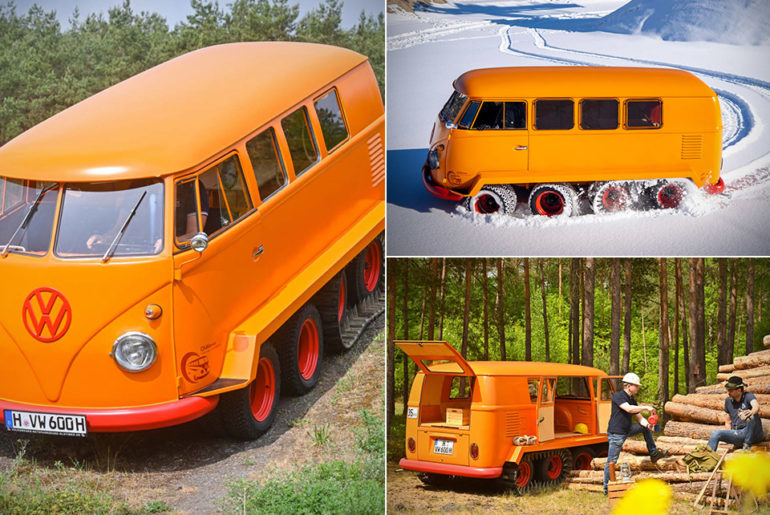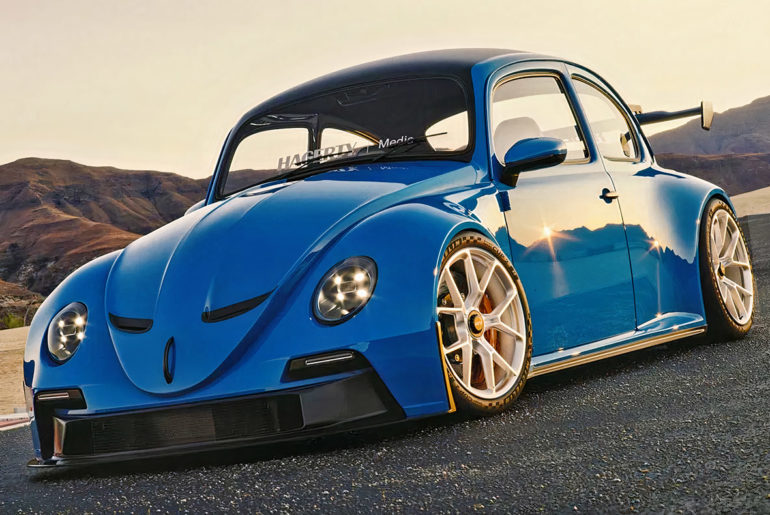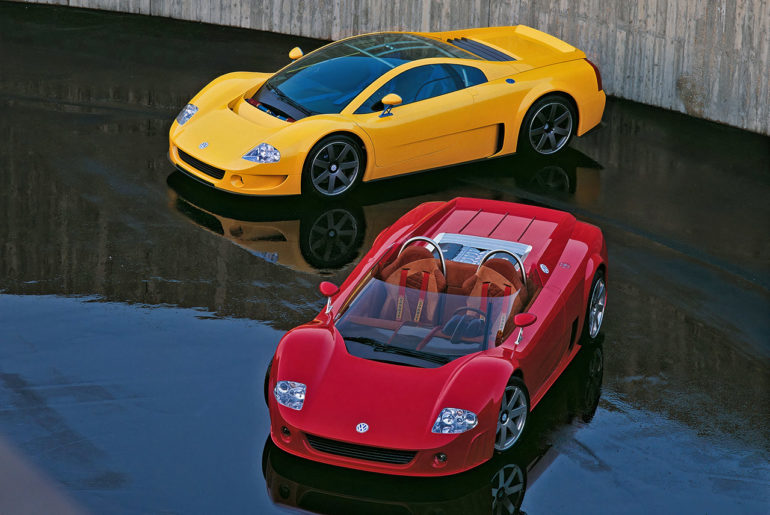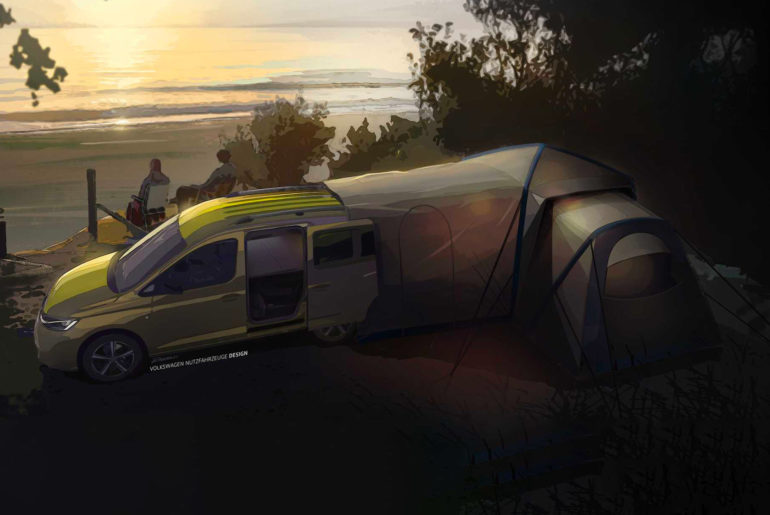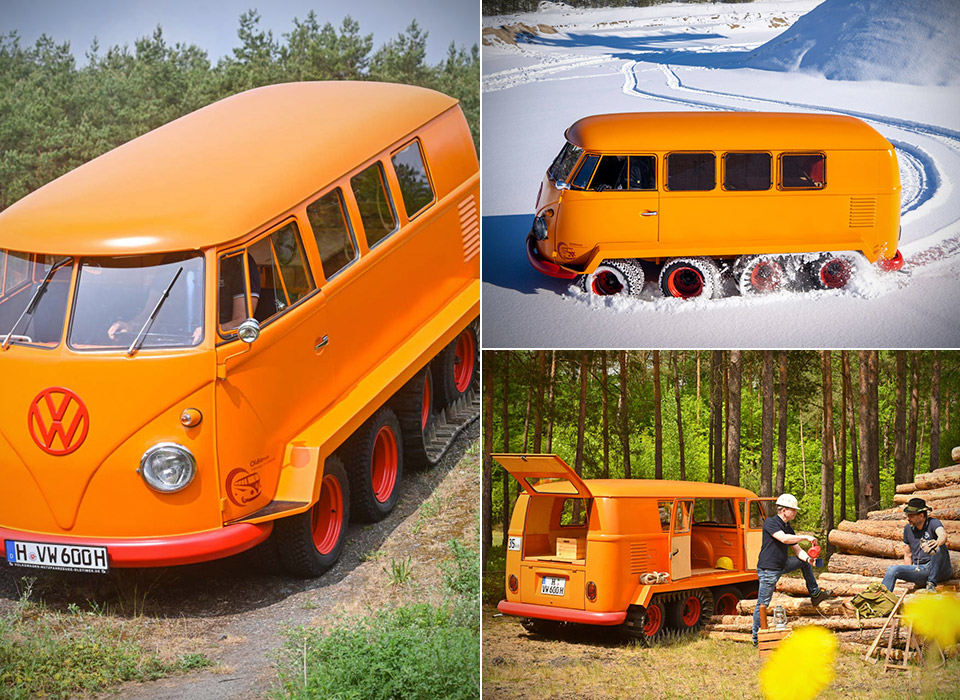
This Volkswagen T1 was originally manufactured in the Hannover plant sometime during May 1962 and Vienesse mechanic Kurt Kretzner transformed it into ‘Half-Track Fox’. It was then turned into a T1 with four axles and two have been fitted with a chain drive mechanism similar to tank tracks. The chains are mounted on 13-inch wheels and a Kretnzer custom designed aluminum elements with rubber blocks two centimeters thick to spare the asphalt.
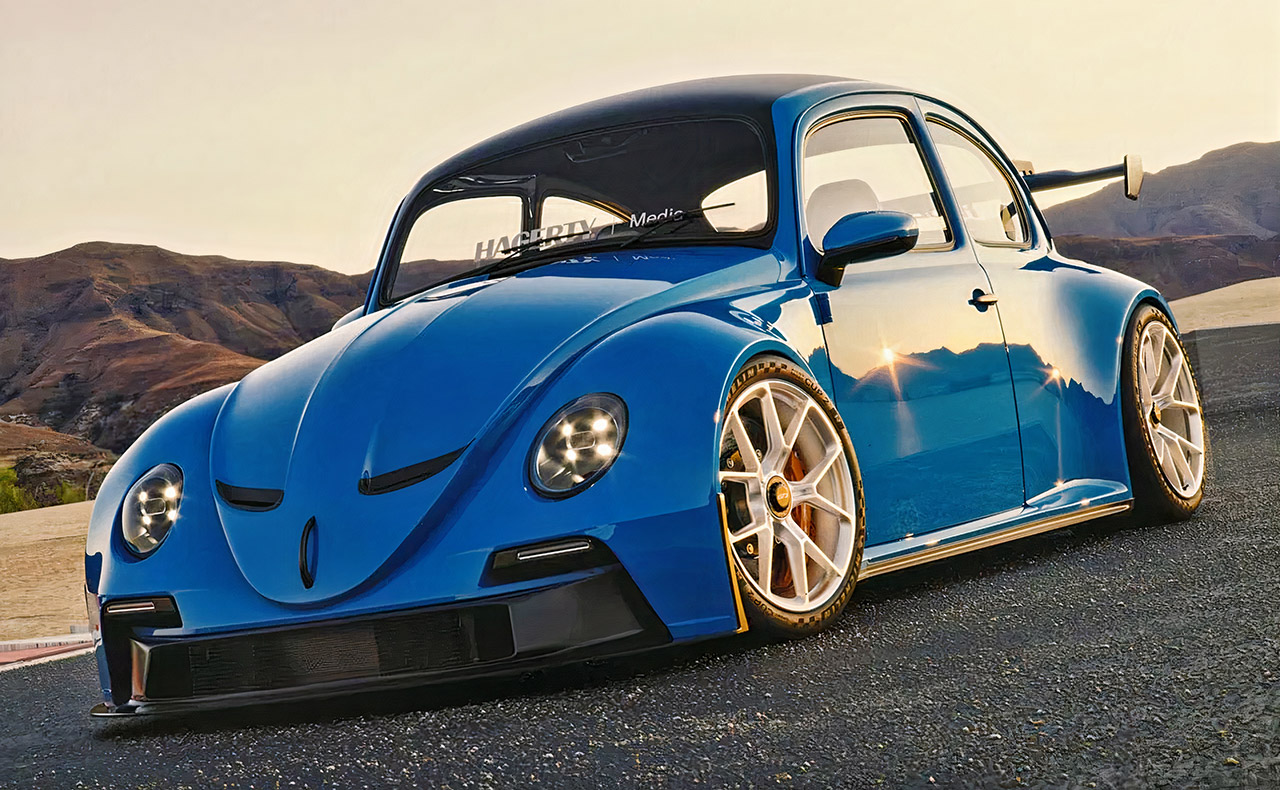
Automotive designer Khyzyl Saleem wanted to see what would happen if you merged the new Porsche 992 GT3 and Volkswagen Beetle into a single vehicle. The result would actually make most people look twice on the road, complete withe the bug eye headlights and large rear spoiler.

The Volkswagen W12 is basically a series of supercar concepts that the automaker manufactured between 1997-2001. It all started with the W12 Syncro, which made its debut at the Tokyo Motor Show in 1997. This vehicle had a bright yellow paint job, powered by a 5.6L W12 engine making 414 hp with Syncro four-wheel drive.
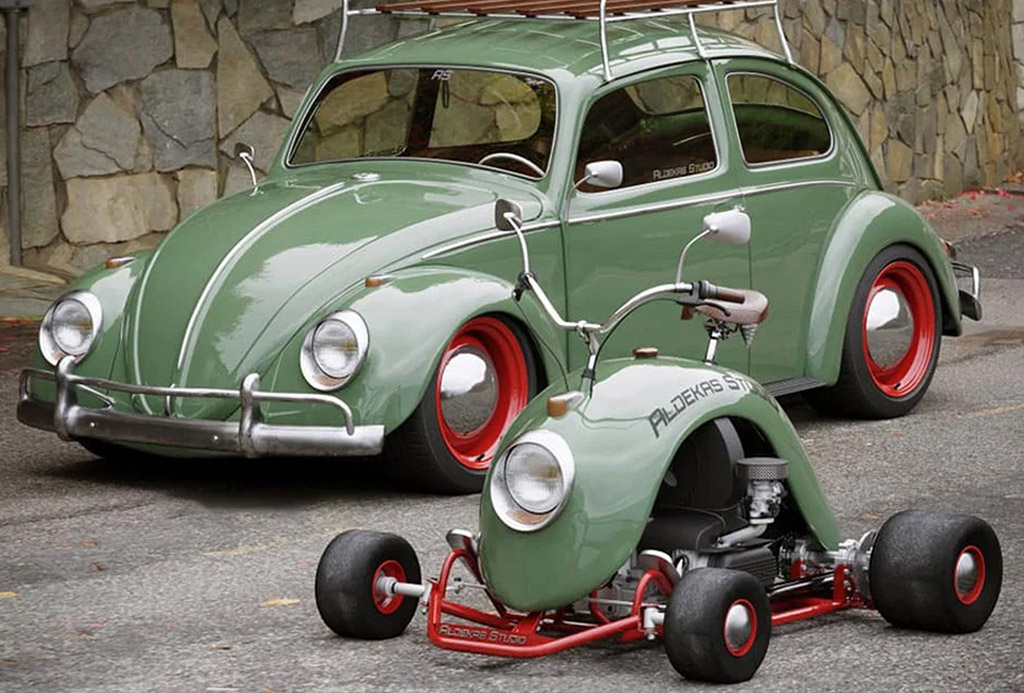
Photo credit: Aldekas Studio
The Volkswagen Beetle is essentially a two-door, rear-engine economy car, with seating for up to five occupants, that was manufactured from 1938 until 2003. Over the years, its design has remained consistent, but Aldekas Studio had other things in mind for the iconic vehicle. How so? They used a fender as well as a few other parts from a VW Beetle to create ‘Bugkart Wasowski,’ or a small go-kart to be more specific.
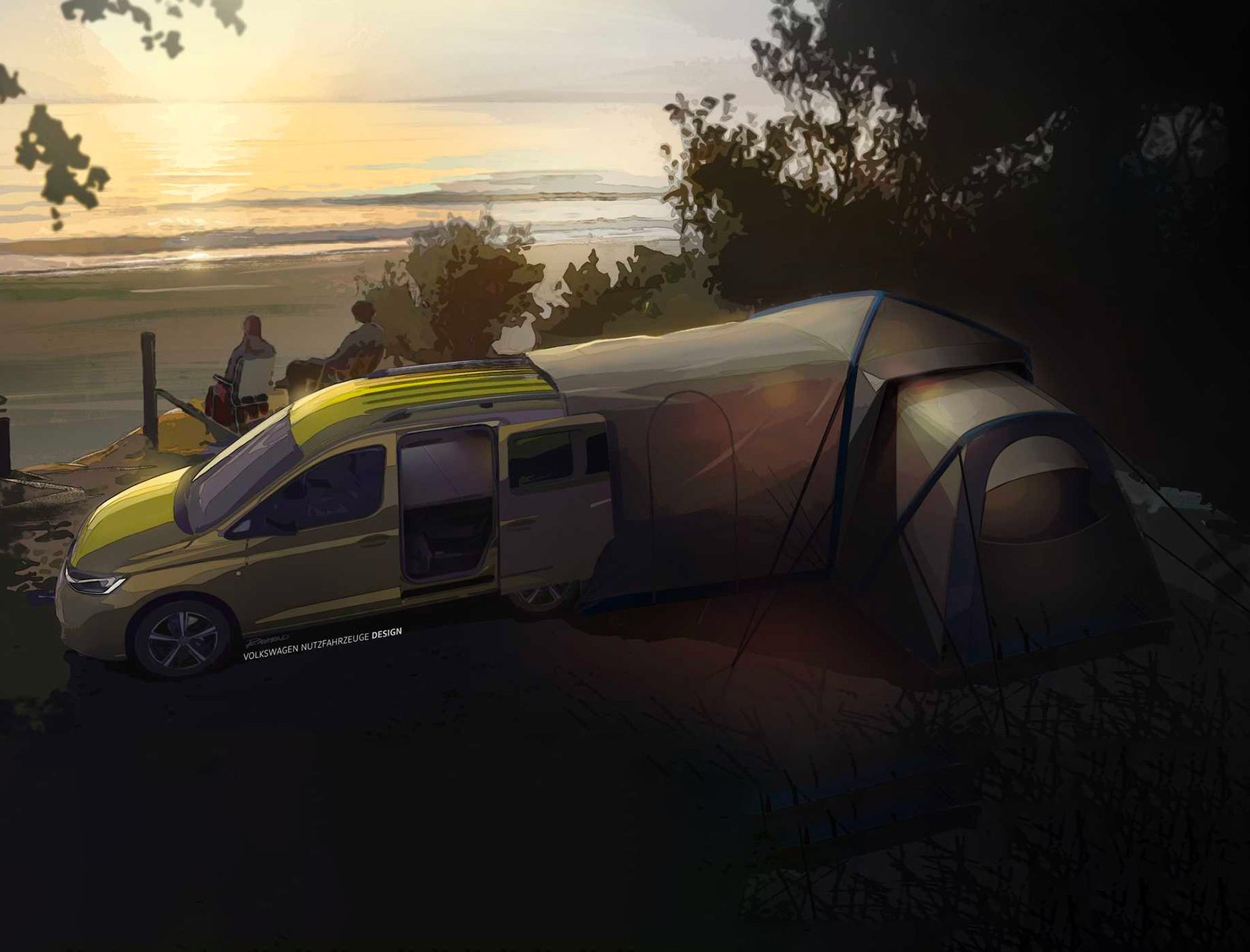
Volkswagen officially announces the Mini-Camper, which is the Caddy Beach successor, and based on the completely revamped 5th generation of the Caddy. Some of the new features include an innovative bed concept that offers greater versatility, while technology inside the van is on the cutting edge. Love stargazing? You’ll definitely enjoy the 1.4-square-meter panorama glass roof at night.

